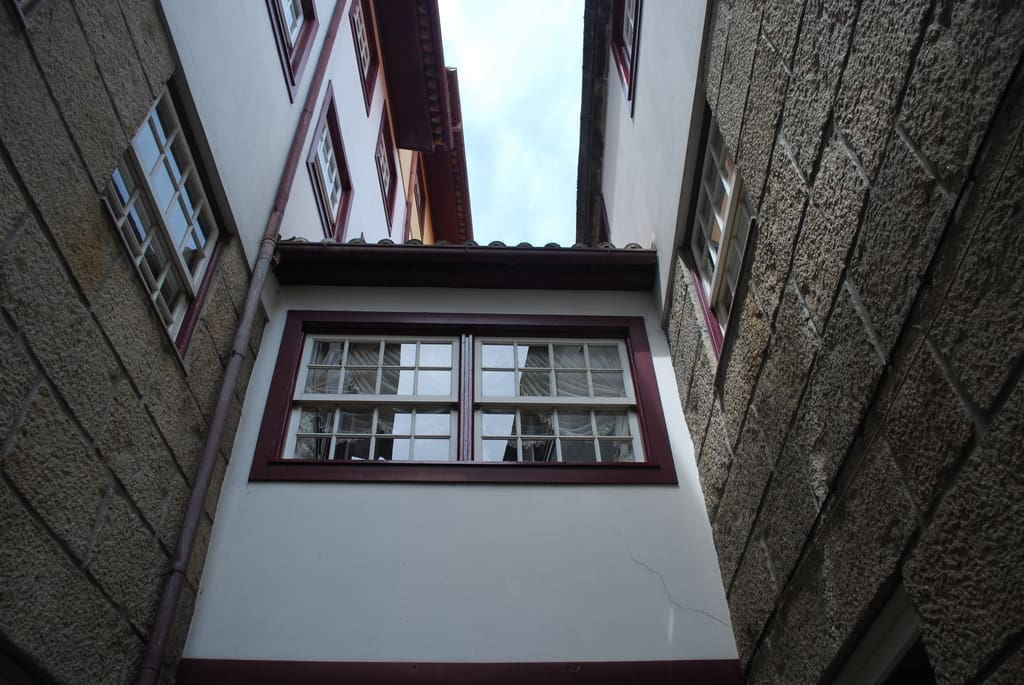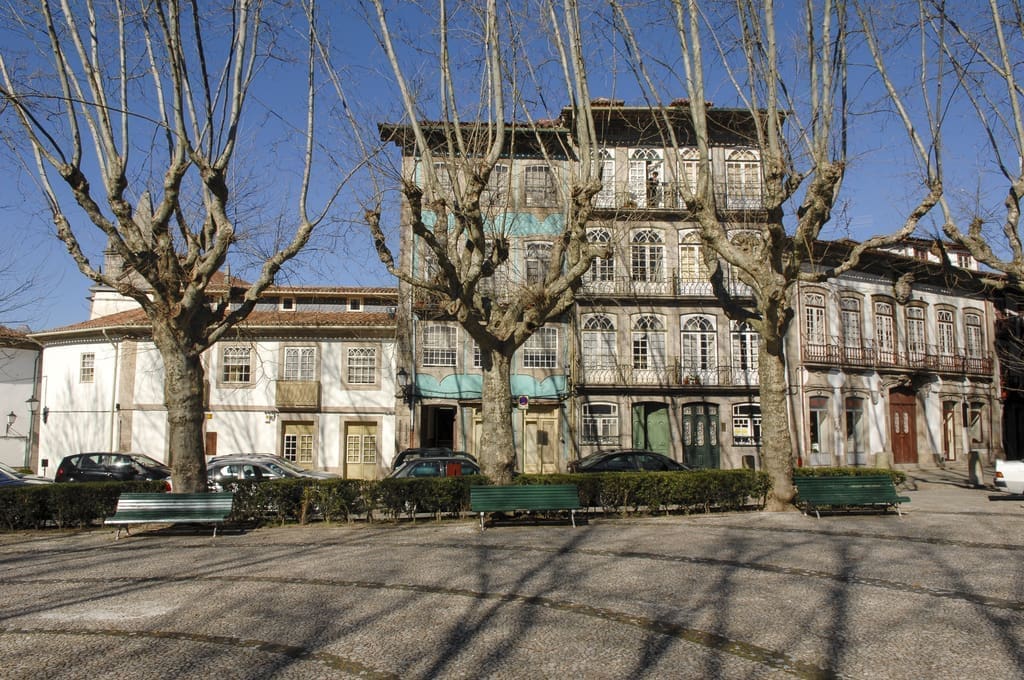At one end of Rua Egas Moniz we find the Largo Condessa do Juncal, known by locals as “Feira do Pão” (bread fair) or “Feira do Leite” (milk fair), because these two essential foodstuffs were once sold here, directly from farmers to the inhabitants of the centre.
This square dates back to the end of the 19th century, when the entire urban fabric of the city underwent profound changes. The medieval buildings, streets and alleys that occupied this space were demolished to make way for a small square.
The Largo owes its name to Augusta Ferreira Cabral Pais do Amaral (1836-1914), paying homage to a benefactor born in Guimarães, who lived in Lisbon, but never forgot her homeland. She was given the title of Countess of Juncal after her institution by King Charles I, by decree of April 17, 1890.
It is a quiet, discreet and very pleasant place in the Historic Center, protected by dense trees that cool when it is hot, inviting us to sit on one of the garden benches and enjoy the tranquility that surrounds it.
In the center of the square there is a monument in honor of Gravador Molarinho. Son of a goldsmith, he was born and lived in Guimarães until he was twenty, when he moved to Porto where he worked as a goldsmith for a dozen years. Despite not having any studies, he then dedicated himself to engraving medals, an activity to which he remained faithful until the end of his life. He became known for the excellence of his engravings and his works were and continue to be highly appreciated, as collectors say.
In the houses on the south side of Largo we see a modern building, the Edificio Muralha, designed by architect António Gradim (1985). The construction opens a large glass surface, which allows you to see outside, and also inside, how the building preserves and exposes the wall itself, preserving the original façade on the side of Alameda de S. Dâmaso.
At the end of the square, on the left, appears the Viela de Arrochela or Viela dos Caquinhos, half hidden and very narrow. It is one of the oldest streets in Guimarães, which in past centuries had the status of a street. Everything indicates that the name of the street has its origins in a family of Franks, the Rochella, who arrived in Guimarães, in the 11th century, with Count D. Henrique.
For many centuries, the people who lived in this alley threw dirt out of the windows, which always made it smell bad. It was quite common to hear: “Water goes!”
For this reason, this small street was forced to close its two entrances with doors in the 19th century. One of the curiosities and peculiarities of this genuine alley are its 5 walkways, that is, passageways that connect the houses on one side of the alley to the other, and which served to take advantage of the space and increase the size of the small homes.

 Guimarães, Northern Portugal
Guimarães, Northern Portugal










 Guimarães Turismo
Guimarães Turismo 




